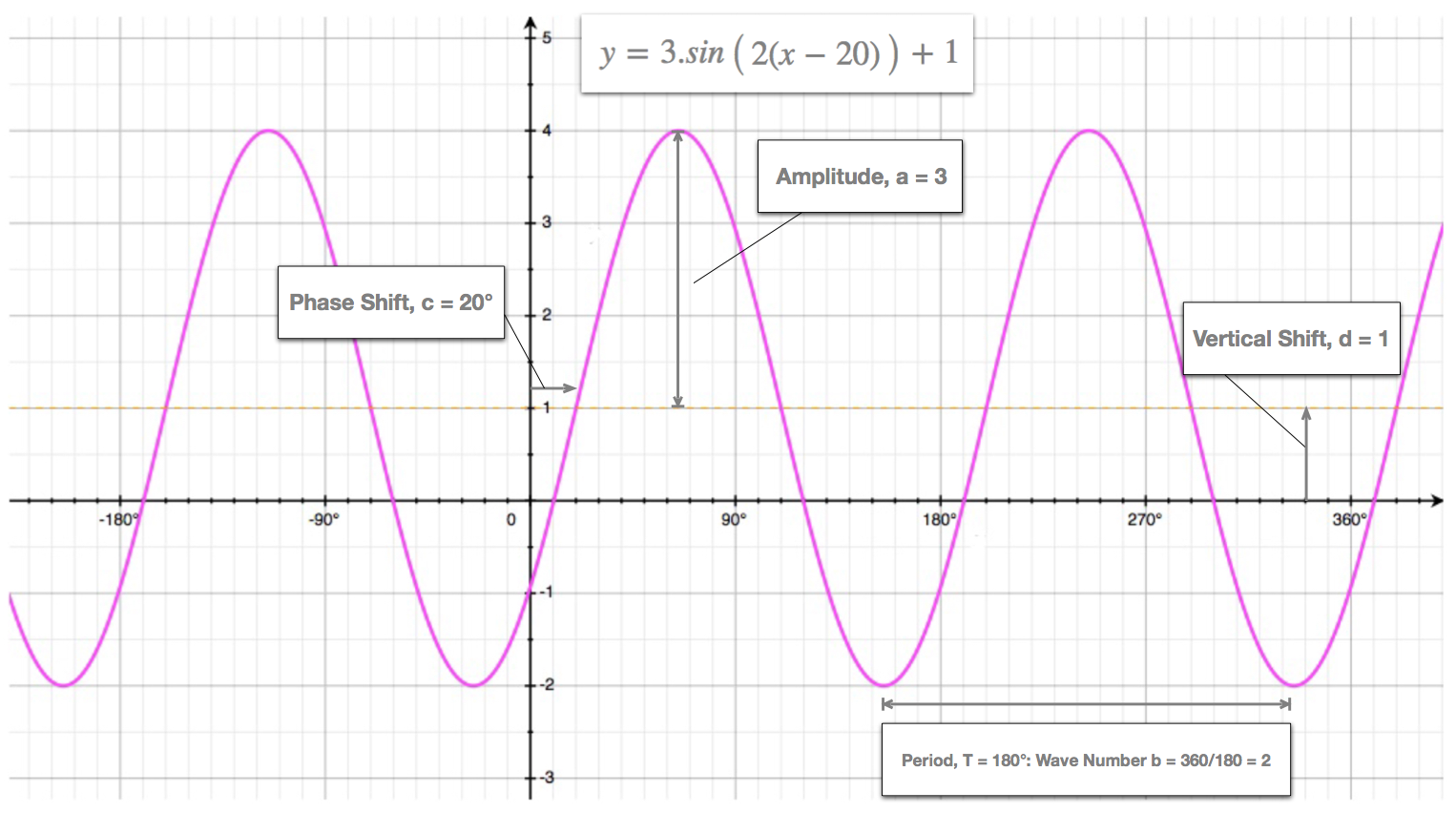
The sin wave (blue) is offset the cosine wave (green) gives a better fit. We know that cos is offset by π/2, so changing sin to cos gives the correct fit: y = 18.99 * cos(0.43x + 3.30) + 56.29. Step 4: Check that your regression equation fits the curve by typing the function into Desmos. Here, the different parts of the equation are: Plugging those in, we get (rounded to two decimal places):

Step 3: Plug your results into the equationįor this example, we’re given the following results:
#Sine curve equation maker update
The regression statistics will update automatically when you type new data into the table. The example in the Desmos dataset is the SIN function. You can try to fit one, or both-there’s a lot of leeway and you can’t really make a wrong choice, as you’ll see in the next steps. Note that this is just a starting point The main difference between sine and cosine is that the sine graph is the cosine graph shifted to the right on the x-axis by π/2units.


Step 2: Choose either a sine function or a cosine function. We can see that a sinusoidal curve, or wave, would be a good fit for this data, so we can continue. You can change the data entry points in the left hand table by typing the entries in (just like you would in a spreadsheet): This example uses this dataset of weather for a fictitious location.


 0 kommentar(er)
0 kommentar(er)
